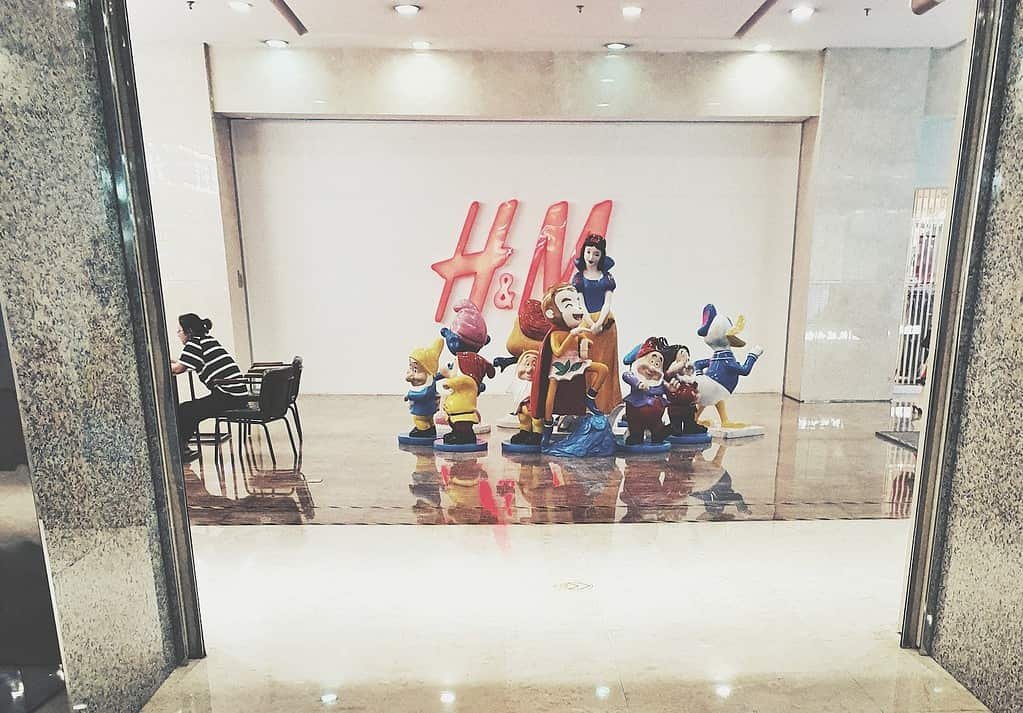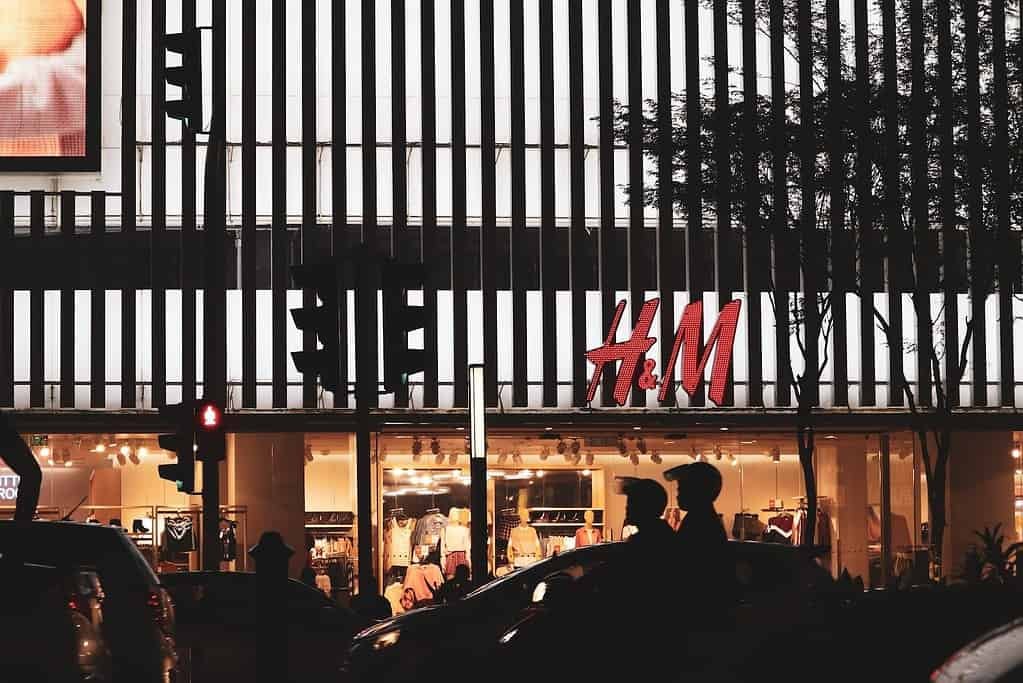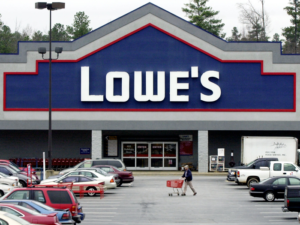Hennes & Mauritz, commonly known as H&M, has come a long way since its humble beginnings in 1947. This Swedish multinational fashion retailer was founded by Erling Persson in Västerås, Sweden, with the primary aim of offering affordable yet stylish clothing to the masses. Originating as a women’s clothing store called ‘Hennes,’ which means ‘hers’ in Swedish, it wasn’t until 1968 when it acquired the hunting and fishing equipment store Mauritz Widforss that it became known as Hennes & Mauritz or simply H&M.
Today, H&M stands tall as one of the leading fashion giants not only in Sweden but worldwide. With its innovative and trendsetting approach to fashion, H&M has managed to captivate the hearts of millions across the globe. From trendy streetwear to chic formal wear and everything in between, this dynamic brand caters to diverse age groups and styles while constantly adapting to evolving fashion trends.
With an expansive presence across 74 markets globally, H&M has established itself as a household name on both physical high streets and within e-commerce platforms. The company’s extensive network comprises over 5,000 stores worldwide. This widespread reach allows H&M to touch the lives of millions of customers while cementing its position as a go-to destination for affordable fashion.
From its modest beginnings in Sweden to its global dominance today, H&M continues to shape the industry with its accessible yet stylish offerings. Now let’s get to conducting the swot analysis of h&m!
Jump Ahead To :
Strengths of H&M
Extensive global presence and brand recognition
One of the key strengths that sets H&M apart in the fashion industry is its extensive global presence and strong brand recognition. With over 4,900 stores in more than 70 countries, H&M has successfully established itself as a leading fashion retailer on a worldwide scale.
Whether you are strolling through the streets of New York City or exploring the bustling markets of India, chances are you will come across an H&M store. This widespread presence allows H&M to cater to diverse customer preferences and tap into various consumer markets.
Strong supply chain management and efficient logistics
H&M’s success can also be attributed to its robust supply chain management and efficient logistics operations. The company has mastered the art of delivering trendy fashion at affordable prices by effectively managing its supply chain from sourcing raw materials to distributing finished products.
By maintaining strong relationships with suppliers globally, H&M ensures a steady flow of high-quality materials while keeping costs under control. Additionally, their well-oiled logistics machinery enables them to swiftly move products from factories to retail locations around the world, ensuring timely availability for customers.
Emphasis on sustainability and ethical practices
In an age where consumers increasingly value sustainable and ethical practices, H&M stands out for its commitment towards environmental consciousness and fair labor conditions. The company has implemented various initiatives aimed at reducing their environmental impact throughout their supply chain. From using organic cotton in their clothing lines to implementing recycling programs for old garments, H&M demonstrates a genuine dedication towards sustainability.
Furthermore, H&M actively supports fair labor practices by ensuring safe working conditions for garment workers and engaging in social initiatives that empower communities involved in production processes. Their transparency regarding suppliers and efforts towards improving labor rights have gained them praise from organizations advocating for responsible business practices.

Collaborations with renowned designers and celebrities
H&M has successfully leveraged collaborations with renowned designers and celebrities, allowing them to offer unique, limited-edition collections that generate excitement and drive footfall to their stores. These collaborations create a sense of exclusivity and desirability around H&M’s offerings, attracting fashion-forward customers who seek the thrill of owning designer pieces at more accessible prices.
Partnerships with high-profile names like Karl Lagerfeld, Alexander Wang, and Beyoncé have garnered global attention and reinforced H&M’s reputation as a trendsetter in the fast-fashion industry. By strategically collaborating with influential figures in the fashion world, H&M not only expands its customer base but also reinforces its brand image as an innovative and forward-thinking retailer.
H&M’s strengths lie in its extensive global presence and brand recognition, efficient supply chain management, commitment to sustainability and ethical practices, as well as successful collaborations. These factors contribute to H&M’s continued success in meeting customer demands for trendy fashion at affordable prices while positioning themselves as a responsible player in the industry.
The Weaknesses of H&M
Overreliance on Low-Cost Manufacturing in Certain Regions
When it comes to producing their affordable clothing items, H&M heavily relies on manufacturing in regions where labor costs are relatively low. While this strategy has allowed them to offer competitive prices, it also poses risks. Dependence on a few specific regions for production makes the supply chain vulnerable to disruptions such as political instability, trade disputes, or natural disasters.
Furthermore, concerns have been raised regarding the working conditions and wages of factory workers in these regions, which could potentially tarnish the brand’s reputation if not addressed effectively. H&M must find a balance between cost-efficient production and ensuring ethical practices throughout their supply chain.
Limited Product Differentiation Leading to Potential Commoditization
One weakness that H&M faces is the limited differentiation of its products. As a fast-fashion retailer catering to a broad market segment, they often rely on producing large quantities of similar styles that may lack uniqueness or individuality.
This can result in a risk of commoditization, where consumers view their products as interchangeable with those offered by other competitors. To counter this potential downside, H&M has started collaborations with renowned designers and celebrities like Karl Lagerfeld and Beyoncé to inject more exclusivity and excitement into their collections.

Challenges in Adapting to Rapidly Changing Fashion Trends
The fashion industry is notorious for its ever-changing trends and fickle consumer preferences. One weakness for H&M lies in keeping up with these rapid shifts while maintaining an efficient supply chain and production process.
Despite their efforts to be agile and responsive through close monitoring of fashion shows and trends, there is still a risk that they may fall behind or fail to capture emerging styles quickly enough. However, given their vast global presence and quick turnaround times from design concept to store shelves, H&M has managed to mitigate this weakness better than some of its competitors.
Intense Competition from Both Fast-Fashion and Online Retailers
In the highly competitive fashion landscape, H&M faces intense competition not only from other fast-fashion retailers like Zara and Forever 21 but also from the rise of online retailers such as ASOS and Boohoo. Fast-fashion competitors match H&M’s ability to quickly produce affordable clothing, while online retailers offer convenience and a wider range of product options.
This intensified competition puts pressure on H&M to continuously innovate, evolve their strategies, and invest in digital transformation to remain relevant and retain their market share. Nevertheless, with their strong brand recognition and loyal customer base, H&M has managed to stay resilient in the face of these challenges.
While H&M enjoys numerous strengths that have propelled it to global success, it is essential to acknowledge the weaknesses that exist within the company. Overreliance on low-cost manufacturing regions carries risks that can disrupt supply chains and impact reputation.
Limited product differentiation may lead to commoditization concerns; however, collaborations help address this issue. Adapting swiftly to changing fashion trends is an ongoing challenge for any fast-fashion retailer.
Intense competition from both traditional fast-fashion players as well as online retailers keeps H&M on its toes. By recognizing these weaknesses and implementing strategic measures effectively, H&M can navigate these hurdles successfully while continuing its mission of delivering affordable fashion worldwide
Opportunities for H&M
Expansion into emerging markets with growing middle-class populations
H&M has a tremendous opportunity to tap into the burgeoning middle-class populations in emerging markets. As developing economies experience rapid growth, the purchasing power of their middle class is increasing. Countries like China, India, and Brazil hold great potential for H&M’s expansion plans.
By strategically setting up stores in these regions and adapting their marketing strategies to cater to local preferences, H&M can capitalize on this opportunity. Additionally, by understanding the cultural nuances and fashion demands of these markets, H&M can tailor its product offerings to resonate with the local customers.
Increasing demand for sustainable fashion
One of the most significant opportunities for H&M lies in meeting the rising demand for sustainable fashion. As consumers become more conscious about environmental issues, there has been a noticeable shift towards eco-friendly and ethically produced clothing.
H&M’s commitment to sustainability through initiatives like their ‘Conscious Collection’ allows them to position themselves as a responsible fashion retailer. By emphasizing their use of organic materials, recycling programs, and fair labor practices, H&M can attract a growing segment of environmentally conscious consumers who are willing to pay a premium for sustainable fashion.

Growth potential in the online retail sector
The online retail sector continues to grow exponentially, presenting immense opportunities for companies like H&M. With advancements in technology and changes in consumer behavior towards online shopping convenience, having a robust e-commerce presence is crucial.
Investing in user-friendly websites and mobile apps will enable H&M to reach customers globally round-the-clock. Moreover, by offering features like virtual try-ons and personalized recommendations based on individual style preferences, H&M can enhance the online shopping experience and boost sales further.
Expanding product range beyond clothing: beauty and home decor
To diversify its revenue streams and cater to customer needs beyond clothing, H&M can extend its product range to include beauty and home decor items. By leveraging their strong brand reputation and design expertise, H&M can introduce cosmetics, skincare, and home accessories that align with their fashion aesthetic. This expansion would not only attract existing loyal customers but also appeal to a broader consumer base seeking a cohesive lifestyle brand experience.
With the right marketing strategies and collaborations with influencers in the beauty and home decor industry, H&M can establish itself as a one-stop destination for fashion-forward individuals looking to express their style in all aspects of life. H&M has several exciting opportunities on the horizon.
Expanding into emerging markets with growing middle-class populations allows them to tap into new customer segments. Additionally, catering to the increasing demand for sustainable fashion aligns with evolving consumer values.
Investing in the online retail sector will enable them to reach a wider audience while expanding their product range beyond clothing opens doors for new revenue streams. By capitalizing on these opportunities strategically, H&M can continue its growth trajectory while staying ahead in the competitive fashion landscape
Threats to H&M
Shift towards slow fashion movement impacting fast-fashion brands
The fashion industry is witnessing a significant shift towards the slow fashion movement, which emphasizes sustainability, ethical practices, and quality over quantity. This movement encourages consumers to invest in timeless pieces rather than constantly chasing after fleeting trends. As a result, fast-fashion brands like H&M face a challenge in aligning their business model with the values of conscious consumers.
While H&M has made efforts to incorporate sustainable practices into its operations, such as their Conscious Collection and recycling initiatives, it still faces scrutiny for its overall environmental impact. This pressure from the slow fashion movement could potentially impact H&M’s reputation and market share.
Rising production costs due to labor wage increases
One of the key factors that have contributed to H&M’s success is its ability to offer affordable fashion by manufacturing garments in countries with lower labor costs. However, as labor wages increase in these regions, production costs also rise for companies like H&M.
This poses a threat as it could lead to narrower profit margins or force H&M to raise prices, potentially losing some of its price-sensitive customers. Moreover, if production costs continue to surge significantly over time and outpace the company’s ability to manage them effectively, it could hamper H&M’s competitiveness in the market.

Changing consumer preferences towards more niche or luxury brands
Consumer preferences within the fashion industry are ever-evolving and can quickly shift towards more niche or luxury brands. While H&M has built its reputation on offering fashionable clothing at an accessible price point, there is a risk that changing consumer tastes may divert attention away from mass-market retailers like H&M and towards emerging niche brands or established luxury labels. As consumers become more discerning and seek unique styles or higher-end products that reflect their individuality or social status, H&M may face challenges in retaining its customer base and maintaining strong brand loyalty.
Potential negative impact from economic downturns or global crises
Like any other business, H&M is not immune to the effects of economic downturns or global crises. In times of financial instability, consumers tend to prioritize essential needs over discretionary spending, which could result in decreased sales for retailers like H&M. Additionally, events such as political unrest, natural disasters, or pandemics can disrupt supply chains and hinder operations.
For example, during the COVID-19 pandemic, H&M experienced store closures and supply chain disruptions due to lockdown measures and restrictions on international trade. While H&M has shown resilience in navigating through such challenges in the past, it remains vulnerable to unforeseen circumstances that can negatively impact its financial performance.
While H&M has established itself as a dominant player in the fast-fashion industry with numerous strengths and opportunities, it also faces several threats that require careful consideration. The shift towards slow fashion ideals poses a challenge for a brand associated with mass production and fast-paced trends.
Additionally, rising production costs can eat into profit margins if not managed effectively. Changing consumer preferences can divert attention towards niche or luxury brands instead of mass-market retailers like H&M.
Global economic downturns or crises can have adverse effects on the company’s operations and profitability. To thrive amidst these threats, H&M must continue evolving by focusing on sustainability efforts, differentiating its product offerings further while staying attuned to consumer preferences and adopting agile strategies to navigate uncertain times successfully.
Conclusion
H&M stands as a global fashion powerhouse, leveraging its extensive global presence, robust supply chain management, and sustainable initiatives to connect with fashion-conscious consumers worldwide. While challenges like overreliance on low-cost manufacturing and swift trend adaptation persist, the brand’s potential to tap into emerging markets, embrace sustainable practices, and diversify its product range presents promising avenues. Amid threats from changing consumer preferences and economic uncertainties, H&M’s strengths and opportunities form a sturdy foundation for ongoing growth and success, positioning the brand optimistically for the future.






